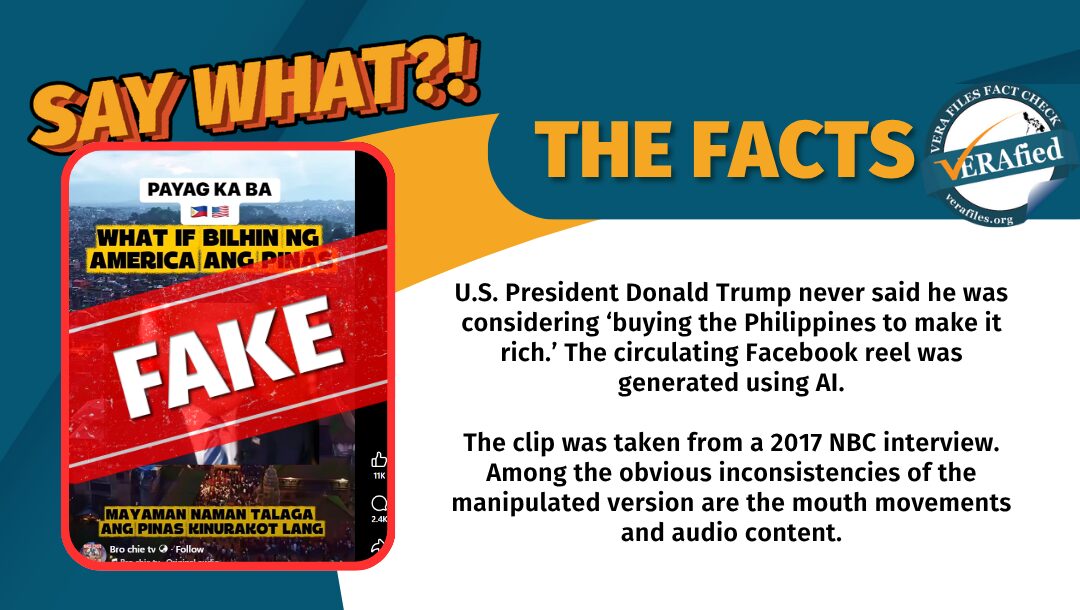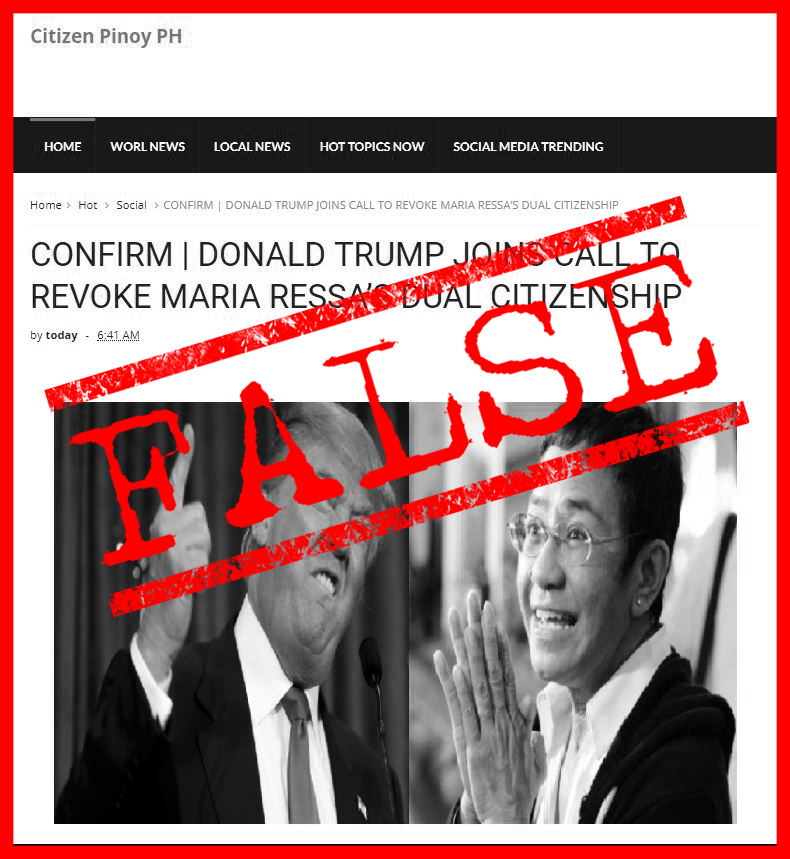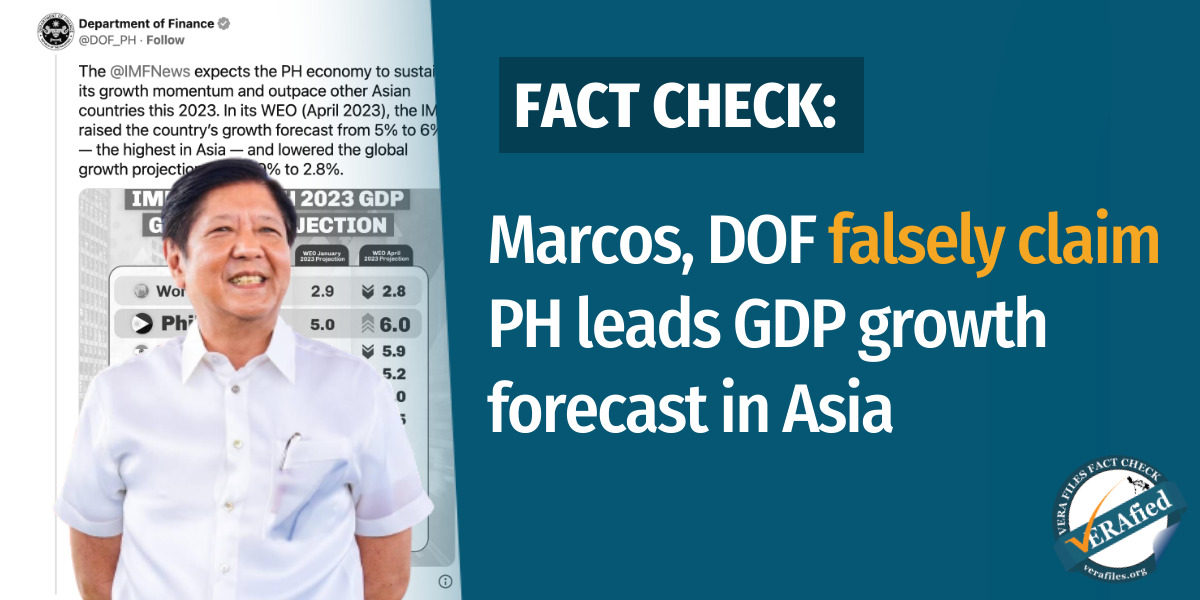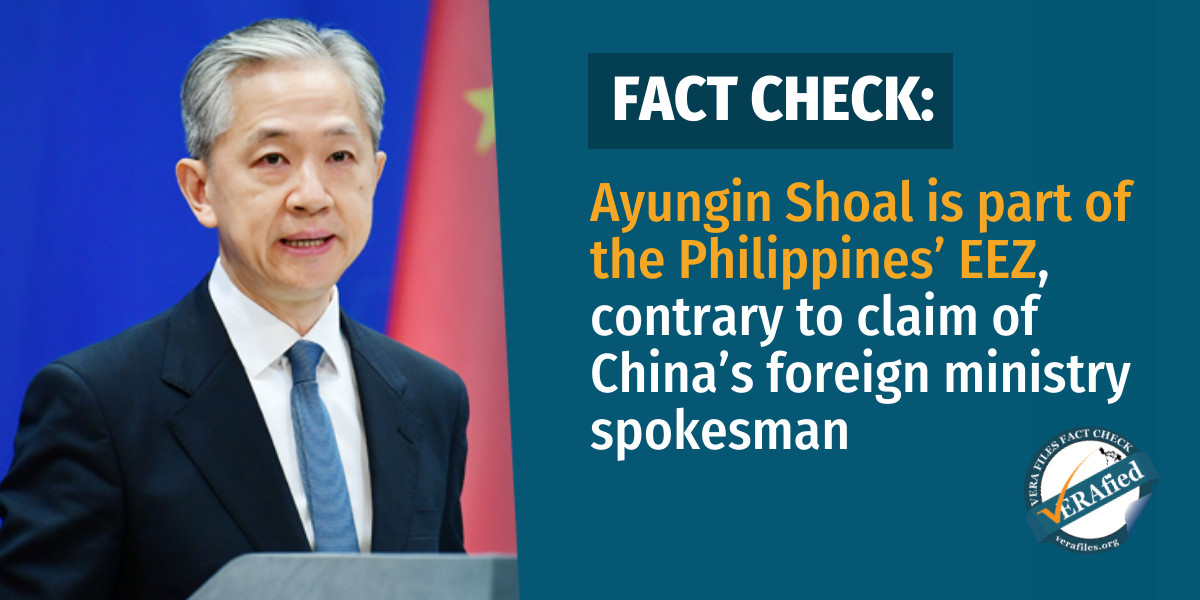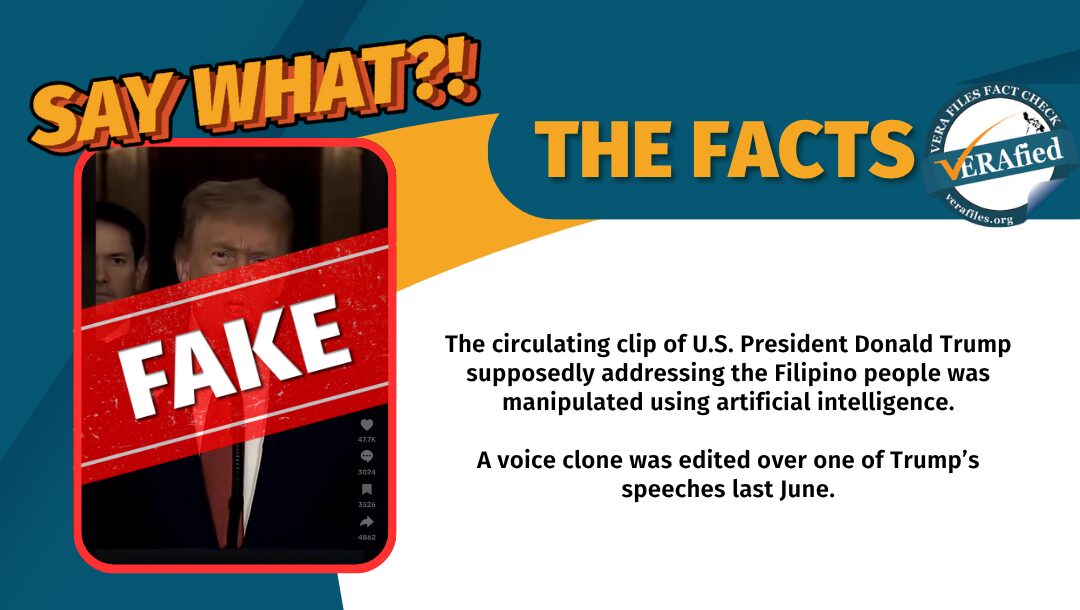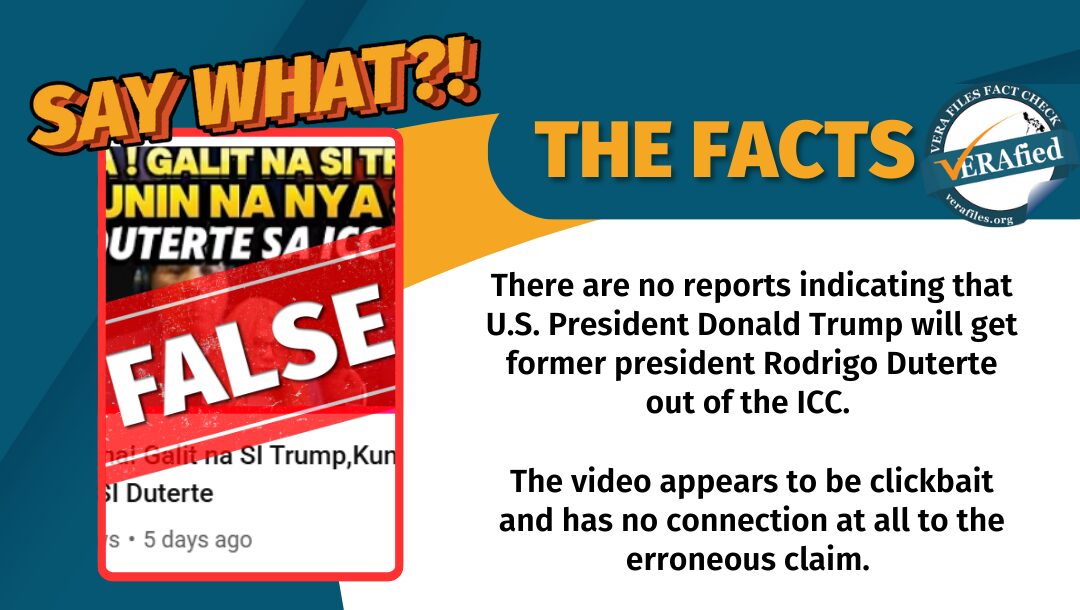A Facebook video showing United States President Donald Trump supposedly considering “buying the Philippines to make it rich” has been circulating online. This is fake and was manipulated using artificial intelligence.
Two Facebook accounts posted the video. Another post carried different visuals but used the same audio. The first post published on Sept.15 carried the caption:
“America bibilhin ang pilipinas payag ka ba (America to buy the Philippines do you agree) #Philippines #DonaldTrumptrumph.”
The fabricated 16-second video showed a cropped frame of Trump in a dimly lit room with the U.S. flag in the background. It showed the U.S. president saying:
“HI, PEOPLE OF THE PHILIPPINES. SOMEBODY ASKED ME, ‘MR. TRUMP, CAN YOU BUY THE PHILIPPINES?’ I SAID ‘WHY NOT?’ THE PHILIPPINES IS VERY RICH BUT TOO MANY CROCODILES. YOU KNOW, MAJORITY OF POLITICIANS THERE… VERY SAD. FILIPINOS DESERVE BETTER AND I SWEAR I CAN MAKE THE PHILIPPINES RICH.”
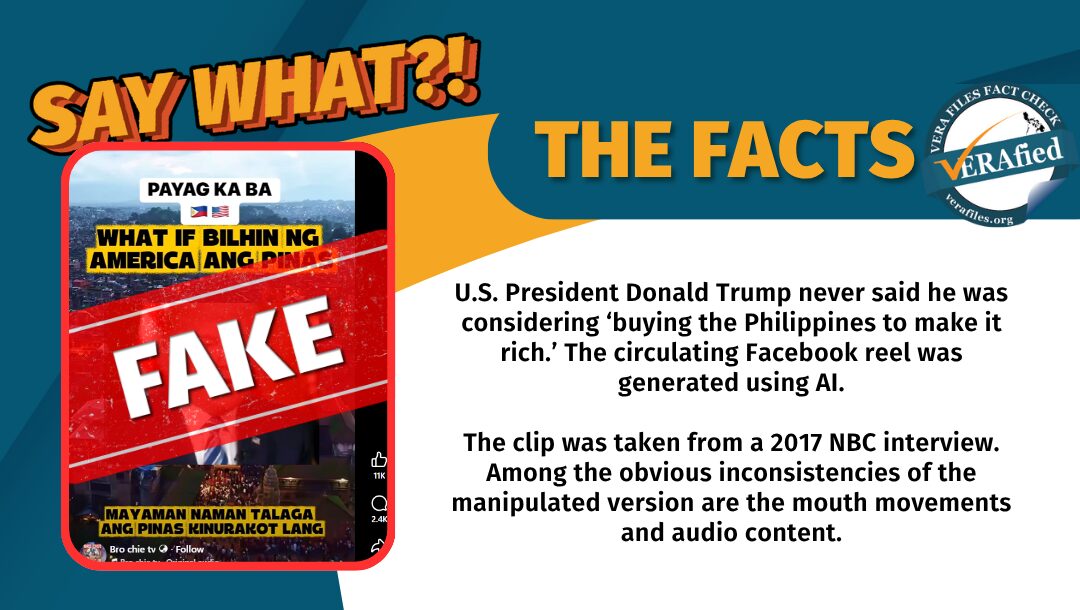
When run through online detection tool Hive Moderation, the results show an aggregate score of 99.8% or “likely to contain AI-generated or deepfake content.” The detection tool also revealed a 70% “hybrid” score, where an “image is partially animated.”
The mouth movements of the American leader in the footage do not match the voiceover. At the 14-second mark, the clip went back to the first frame but the audio continued with a different script.
The original clip was taken from a May 11, 2017 NBC interview where American journalist Lester Holt asked Trump about his decision to fire former Federal Bureau of Investigation Director James Comey.
There are no official statements or news reports about Trump considering the purchase of the Philippines or even commenting on the political situation in the country.
The fake video was first published by FB blogger Bro chie tv (created on April 20, 2022), and has garnered more than 922,300 views and 11,000 likes, 2,400 comments and 6,600 shares, as of writing.
Editor’s note: This fact check was produced with the help of a journalism student of the University of Santo Tomas as part of their internship at VERA Files.
